 |
|
"I accidentally won a hotel stay in Sri Lanka" has been quite the conversation starter lately. How does that happen? Let's rewind a bit... Right before my mom had knee replacement surgery, our dog Bronson passed away from old age. We were devastated, and it was the first time in my entire life that there wasn't a dog in the house. We had said we wouldn't adopt another dog for awhile as it ties us down, but I just couldn't do it. Shortly after my mom's surgery, I met the founder of Wags & Walks (a local nonprofit dog rescue organization) at the Brentwood farmers' market completely by chance. She had an adoptable dog with her, and while we determined he wouldn't be the best fit for our house, it got us "in" with the organization. We began texting her, and eventually we adopted our current dog Ghibli. Shortly after adopting Ghibli, Wags & Walks had their annual fundraiser. While we didn't go to the event, we participated in the online auction. I found a five star hotel stay in Sri Lanka and we bid on it once (it already had one bid)... with no intention of actually winning it (and thinking there was no possible way we'd win with one bid, as it was insanely cheap). Come midnight, no one else had bid after us. Which leads us to now... We're in Sri Lanka!
Sri Lanka's original inhabitants were the Veddah people (which go by Wanniyala-aetto: forest dwellers), who were hunter/gatherers that relied on the island's many natural resources. While their exact origins are unclear, it's believed they descended from people who migrated from India and Southeast Asia in 32,000 BCE and that rising waters submerged their migration route (the land between India and Sri Lanka) in 5,000 BCE. Sri Lanka has been somewhat of a melting pot for different cultures and religions since. You can find Hindus, Christians, Buddhists, and Muslims inhabiting the same area. Unfortunately, many tourists still aren't visiting Sri Lanka, though. Given the island nation's history of its 26-year civil war that ended in May 2009 (between the Sri Lankan government and the Liberation Tigers of Tamil Eelam, also known as LTTE or the Tamil Tigers) and ongoing protests, that doesn't necessarily come as a surprise. However, there's a misconception that Sri Lanka is unsafe today. Sure, there are protests in Colombo (there was even one on our last night near the hotel), but I live in the US where protests and shootings are unfortunately common now. It is no different. Just like the US, there are places you avoid. The tourist areas remain largely unaffected, and really you don't spend much time in Colombo. Protests don't mean you shouldn't travel to the country as a whole. The people in Sri Lanka are some of the nicest people I've ever met throughout my travels. The country is gorgeous. Some of the food is out of this world. I highly recommend visiting, and visiting soon before tourism comes back in full force! While it was extremely depressing for me to see so few tourists there (we only saw two other Americans-- the handful of other tourists we saw were from Germany, Italy, the UK, Scotland, and Russia), it was also the perfect time to go because the country wasn't overrun with tourists and our hotels were unfortunately less than half full.
We left Los Angeles on a Thursday, arriving in Sri Lanka early Saturday morning with the travel time and 13 hour 30 minute time difference. When we landed, an airport representative was waiting for us right at the plane and escorted us to a lounge where we were treated to snacks and tea while they collected our checked bags and got our visa sticker (we already had the electronic travel authorization, so this was very quick).
 |
| Snacks were waiting in the lounge. |
This VIP arrival service was the best thing ever as we landed at 2:30 in the morning, along with all the other international flights. We didn't have to wait in any lines, and we left the airport via a special exit where our car was waiting. We had a quick 20 minute drive to our hotel, the Jetwing Blue, which we unfortunately didn't get to enjoy for long (we departed after breakfast for touring and the upcoming drive to Bentota).
 |
| View from the hotel's lounge. |
 |
| The pool area at Jetwing Blue. |
Before we departed, we had our first egg hoppers of the trip -- a delicious, pancake-like batter (made from fermented rice and coconut milk) with a fried egg in the middle. Hoppers also come as plain hoppers and string hoppers, which is rice flour pressed into very thin noodles. Following breakfast, we set out at 9 AM because why go on vacation to sleep? Our first stop on the way to the Colombo city center was a fish market in Negombo. The town was one of the first to be taken by the Portuguese, who converted many of the local Karavas, Tamil, and Sinhalese fishermen to Catholicism during the mid-sixteenth century. Today, the area remains a stronghold for Christian Sri Lanka and we passed by numerous churches on our way to the fish market. The Dutch transformed Negombo into a commercial center, building a canal (and fortifying it) and to this day, fishing remains vitally important. Easy access to the sea provides Karavas fishermen plentiful supplies of tuna, shark, and seer while the Negombo lagoon backing the town provides some of the best prawns, crabs, and lobsters. We parked the car and took a short walk to see the fish market bustling with activity. We stopped on an overpass, looking out towards the sea. The Karavas are famous for their unusual fishing boats (locally known as oruwas) and distinctive catamarans. While we could see these vessels off in the distance, vibrant, modern fishing boats seem to be commonplace now.
 |
| Boats in the Negombo lagoon. |
From Negombo, we drove approximately 40 minutes south to Colombo. With a population of roughly 633,000 in the city proper (and 5.6 million in the Colombo metropolitan area), it is the city's financial center. Contrary to belief, Colombo is only the commercial capital. Sri Jayewardenepura Kotte (formely Kotte, which is frankly much easier to refer to) is now the city and legislative capital of Sri Lanka. Within several decades of Sri Lankan independence, government offices began to outgrow the capital of Colombo and the decision was made to relocate offices outside the city. In 1977, the government designed Sri Jayewardenepura Kotte as the new capital and in 1982, the new parliament building was inaugurated there. Shortly after, other government offices began relocating as well. Colombo continues to draw the tourists, though, with many well known sights and restaurants on offer.
In Colombo, we visited Gangaramaya Temple (one of the most popular and iconic temples in Colombo). Located on the banks of Beira Lake, the complex consists of the main temple, a large museum, a library, and vocational training centers. The 120 year old temple features a mix of Sri Lankan, Thai, Indian, Burmese and Chinese styles which isn't surprising given that the museum houses Buddhas and other religious relics donated by various other Asian countries in addition to statues of Hindu gods, old watches, Dutch coins, and other antique artifacts.
 |
| Inside the temple. |
 |
| Buddhas on the rooftop. |
A four minute walk away, Seema Malaka temple is associated with Gangaramaya Temple and is situated directly on Beira Lake. The temple grounds are used mainly for meditation and rest, with one large assembly hall overlooking Colombo's city skyline. The pontoon boardwalk links Seema Malaka with the mainland and its outer boundary wall is adorned by numerous golden Buddha statues which represent different sitting postures. There are various wooden, raised platforms which divide the temple and are connected with the walkway. Some platforms have statues and one has a gorgeous Bodhi tree (a sacred fig tree native to the Indochina region and referred to as the tree of awakening) in the central portion which is flanked on all sides with Buddha statues. There are also shrines dedicated entirely to the gods of Hindu religions: Ganesha and Shiva. The peace and quiet at Seema Malaka struck me. Despite being in the middle of a chaotic, noisy city, the temple grounds offered a few moments of tranquility.
 |
| Buddha statues line the Seema Malaka temple. |
 |
| Bodhi tree at the Seema Malaka temple. |
We continued on to Nihonbashi, a Japanese restaurant I had read about in my usual pre-trip research. We each ordered a bento box, not yet realizing how massive the portions are in Sri Lanka. My mom's bento had assorted sushi and tempura while mine had agedashi tofu, okonomiyaki, miso soup, crab fried rice, and a few other smaller dishes.
 |
| Agedashi tofu, salad, okonomiyaki, crab fried rice, tempura prawn roll, and miso soup. |
 |
| Assorted sushi and tempura platter. |
Stuffed, we met our driver Wipul again to drive 90 minutes on the southern expressway to the resort we had won a stay at in the auction. Perched on a rocky headland in the quiet fishing village of Aruruwella, Bentota, the Jetwing Saman Villas is Sri Lanka's first boutique hotel. It is a stunning property, with an open-air dining room, an infinity pool that overlooks the Indian ocean, and spacious suites with views of the Indian ocean. The only complaint? There are no hand rails anywhere... and so many stairs! This became a common occurance while in Sri Lanka, and it was shocking to see the lack of ADA compliant buildings. We spent the remainder of the afternoon resting, after a very busy first day in Sri Lanka. Some pics of the property are below.
 |
| The Deluxe Suite at Jetwing Saman Villas, our auction winning. |
 |
| View from the room. |
 |
| The bathroom had an open air ceiling which meant rain water dripped down over the bath tub, and it was very humid inside. |
 |
| View from the patio. |
The following day, we headed out for a morning visit of Lunuganga Estate, the estate of Sri Lanka's most famous architect of the twentieth century: Geoffrey Bawa. He was among the most influential Asian architects of his generation, and visiting Lunuganga Estate it's easy to see why. In January 1948, Geoffrey Bawa purchased a neglected rubber plantation (formerly a Dutch cinnamon estate even before that) on the eve of Sri Lanka's independence from colonial rule. The 15 acre property is located on the banks of the Dedduwa Lake in Bentota and literally translates to "salt river" in Sinhala. Geoffrey Bawa was an extraordinary lawyer turned celebrated architect who was, and still is, known for his minimalist indoor-outdoor living style. In fact, working on the garden in Lunuganga is what led him to enroll in architecture school in London. His love of checkered patterns is evident, with many black and white squares displayed all over the property via walkways, painted wooden doors, and various other design elements. Full of frangipani trees, water gardens, rice paddies, and Greek sculptures, the property today also houses a small hotel and a restaurant, which we had lunch at.
 |
| Geoffrey Bawa loved squares, so there are checkerboard patterns everywhere. |
 |
| Geoffrey Bawa's butterfly garden (named as such because it is shaped like a butterfly). |
 |
| One of the many small details on the estate. |
 |
| Purple lotus in the butterfly garden. |
 |
| Hindu Pan sculpture. |
With an afternoon thunderstorm starting to roll in, we called it a day and arrived back at the hotel right as the rain started falling. The next morning, we rose early to venture out to Balapitiya for a river safari down the Madu river.
 |
| Suiting up with life jackets at the dock. |
The Madu Ganga is a minor watercourse originating in the Galle district, widening into the Madu Ganga Lake in Balapitiya before draining into the Indian Ocean and is Sri Lanka's second largest wetland. The swampy marshlands here are covered in mangrove forests for over 150 acres and 14 of the 24 species of mangroves can be found in this area. Over 100 bird species inhabit this region along with over 30 species of reptiles, 50 species of butterflies, and 25 kinds of mollusks. In this area, there used to be approximately 64 islands along the river. However, most have sunk under the water and only 25 islands exist today. Of these islands, only 15 have a sizable landmass. Some are inhabited and house Buddhist temples while some have no residents and no tourists, like the infamous Cobra Island where people literally dump cobras onto the island. No one knows how many cobras are on the island today, but I certainly wouldn't want to find out!
 |
| Entering the mangroves by boat. |
 |
| One of the many mangrove sections you can boat through. |
We traveled up and down the river on a small speed boat with a manually retractable tarp awning that we had to lower when we passed under bridges with low clearance, sometimes even having to completely duck to avoid bumping our heads on the ceiling. While on our river safari, we saw Asian water monitors, common kingfishers, purple-faced langurs (also known as the purple-faced leaf monkey, a species of Old World monkey that is endemic to Sri Lanka), and blue freshwater sea jellies.
 |
| Asian water monitor on the banks. We also saw one swimming. |
 |
| Common kingfisher. |
 |
| Purple-faced langur. |
 |
| A non-poisonous sea jelly. |
We stopped at a floating market stand to try Sri Lanka's famous orange coconuts. The king coconuts, locally called Thambili, are a brightly colored variety of coconuts indigenous to Sri Lanka and by far the best coconut I've ever had. The high water content present in the king coconut is just sweet enough, making for a very refreshing beverage in the heat and humidity. It is high in electrolytes and antioxidants with a sweet taste thanks to the natural levels of sucrose and fructose inside and is often used to rehydrate tourists and locals alike.
 |
| Never in my life have I seen my mom enjoy a coconut... |
Following our river safari, we visited a very small, local temple... so off the beaten path that our guide had to keep asking for directions! The Galapata Raja Maha Vihara is an ancient Buddhist temple situated close to the Bentara river. There are four other temples along the river bend, and it's believed that the five temples once belong to a larger complex built between 250 BC and 210 BC by an ancient king. Unfortunately, between the early 16th and mid 17th century (when Sri Lanka was occupied by the Portuguese), the temple was destroyed as was the case with other temples in the area. Today, the temple has been rebuilt and is known for holding the tooth relic of Buddha's third disciple. The main temple showcases vibrant statues, a 25 foot long statue of a reclining Buddha, and the most gorgeous painted walls that, despite the heat and humidity, remain largely preserved with only minimal decay brought on by the monsoons. We had the entire temple complex completely to ourselves... no other tourists or locals were there, aside from two monks and one security guard. It was a humbling experience, and a true taste of local life.
 |
| One part of the temple overlooked a small lake. |
 |
| Walking up to the temple. |
We returned to the hotel for lunch, which we had overlooking the infinity pool and the Indian Ocean.
 |
| View from lunch. |
The highlight of lunch was more king coconuts... in ice cream form, with candied coconut on the top and coconut shavings on the rim of the bright orange coconut. My mom and I both don't enjoy coconut ice cream in the US, but here? It was heavenly. Creamy, light, and not very strong in its coconut flavor, it's safe to say this was some of the best ice cream I've ever had.
 |
| The best coconut ice cream ever! |
We left the hotel again this evening to visit the Victor Hasselblad Sea Turtle Research and Conservation center in Kosgoda. This research center is the oldest conservation and research project started in Sri Lanka in early 1978.
 |
| To-scale sculpture of a leatherback sea turtle. |
Of the seven species of sea turtles, five were found to be frequenting the beaches of the southern coast of Sri Lanka to lay their eggs (green sea turtles, olive ridleys, hawksbills, leatherbacks, and loggerheads). Unfortunately, the eggs were often collected by the villagers and sold in the open market.
 |
| The conservation center had great information boards. |
 |
| Color coded map of where sea turtles nest in Sri Lanka. |
The famous Swedish camera maker Victor Hasselblad (whose cameras were the first to be used on the moon) was a close friend of the renowned Sri Lankan bird photographer, Dr. Upane de Zylva, and Victor made a donation to through Dr. Zylva to be used in any form of conservation and research in Sri Lanka. Another close friend of Dr. Zylva started the turtle conservation project in collaboration with Dr. Zylva and the property was established on Nape, a favorite beach for sea turtles to lay their eggs. While there are many hatcheries in Sri Lanka, there are few reputable ones. Some function as money making turtle petting zoos, often delaying release of hatchlings so they have cute babies to show to tourists which then delays the turtles' abilities to imprint on their birth beach. This conservation center was the only one recommended, and understandably so-- they have the highest release record of 4.5 million sea turtles. Sea turtles here are obtained in numerous ways. Eggs are dug up from the beach and brought to the safety of the hatchery where birds and other prey can't dig up the nests, eggs are bought from fishermen and reburied, and injured sea turtles are looked after and then released if the damage isn't severe (there are only a few on the property that can't be released due to missing flippers). The hatchery building consists of sand to rebury the eggs until hatched and giant tanks where there are hatchlings.
 |
| Eggs are reburied and labeled. When the eggs are ready to hatch, the hatchlings make their own way to a light and they gently get dropped into a bin. |
 |
| One day old hatchlings. |
 |
| A three day old hatchling. |
 |
| One of the rescued sea turtles at the conservation center. |
As part of your visit, you can assist the staff in releasing three day old hatchlings at sunset (which we obviously did). As the sun set, we took a small bucket of olive ridley sea turtles and green sea turtles to the ocean's edge. We stood close to the water with the waves lapping against our ankles as the tide came in and gently released ten hatchlings. Only one in 1,000 sea turtles survive to adulthood, though, and as we released the hatchlings we said... good luck, little ones.
 |
| Our bucket of sea turtles. |
 |
| Releasing sea turtles right at the water's edge. When the tide came in, they were swept away. We watched them as they disappeared into little dots in the ocean. |
 |
| Sunset at the beach after we had released the turtles. |
Following the release, we had a seafood dinner at a restaurant right on the beach to celebrate our last night in Bentota. The next day, we enjoyed a leisurely morning at the hotel before we departed for Galle. We had breakfast on our patio overlooking the ocean one last time and took a short walk around the property.
 |
| Egg hopper, bacon, and fresh fruit with coconut spread. |
 |
| Our hotel was perched right on a cliff. |
 |
| The beach at our hotel. |
We were supposed to be in Bentota one more day but decided to leave one day early after hearing rave reviews regarding Galle from staff at our hotel and Lunuganga Estate. With so few tourists visiting Sri Lanka at the moment, there was no issue with availability so we were able to make an easy, last-minute change. En route, we stopped in Ambalangoda, a small town famous for its masks and puppet crafts. The masks in particular were once known to have been used in exorcisms and to ward off evils and certain illnesses from villages. Historically, there are three different types of dancing rituals: Kolam, which tell mocking stories of traditional Sri Lankan colonial life; Sanni, or devil dancing masks, used in a type of exorcism ceremony to heal people of persisting illnesses believed to be inflicted by demons; and Raksha masks, which are used in festivals and processions. The most famous workshop in the area is Ariyapala & Sons, a fifth generation institution which also houses a small museum. Unfortunately with the disappearance of the traditional beliefs that form the basis of the Sanni Yakuma (devil dance) and the increase of digital media (which causes a lack of interest in the traditional Kolam Dance plays), the Sri Lankan traditional mask culture is rapidly disappearing. Nevertheless, Ariyapala & Sons houses a workshop where locals can train to become a mask maker.

To make a mask, a Kaduru tree (also known as poison nut) is selected and felled due to its soft, easy to carve wood. The trunk is dried to drain the sap and, when dried completely, is measured and cut into pieces. The basic shapes of the masks are carved using mallets and chisels in accordance to measurements in ancient scriptures. The wood is then smoked on racks in a large hearth to prevent damage from insects before being carved into faces and smoothed. All of the carvings are crafted entirely from memory, with no templates used by the men who carve them. The women paint the carved masks with natural dyes, all taken from natural flora and fauna. Downstairs, the mask museum displays masks and tools used to make masks. You can find the Raksha, Sanni, and Kolam masks (my personal favorite being the Raksha masks, which we bought in the store upstairs). The museum also exhibits to scale replications of villages and festivals to demonstrate the history and usage of masks in traditional Sri Lankan culture.
 |
| Some of the many masks used in Sri Lanka. |
 |
| The cobra mask captures enemies. |
 |
| Each Sanni mask is an embodiment of a particular ailment, as ‘Sanni’ is essentially an exorcism ritual. There is one for vomiting and stomach diseases, one for temporary insanity and one for nightmares. |
Following our visit to the mask museum, we proceeded south along the coast to Galle. The ancient seaport of Galle was once called Tarshish, where it's believed King Solomon obtained gems and spices (though others believe this was in Spain). Cinnamon was exported from Sri Lanka as early as 1400 BC and the root of the word itself is Hebrew, so Galle may have been a port for the spice. The "modern" history of Galle started in 1505, when the first Portuguese ship was driven there by a storm. Originally bound for the Maldives, the ship was blown off course and the sailors took shelter in the harbor at Galle. In 1588, the Portuguese built a small fort which they named Santa Cruz and in 1640, the Dutch took over (destroying the Portuguese presence). During the 17th century, the Dutch made additional fortifications to the current fort which still stand today despite it being passed to British hands in 1796. For more than 200 years, Galle was the main port in Sri Lanka but when the breakwaters in Colombo's harbor were constructed in the late 19th century, Galle became Sri Lanka's second harbor. On the way, we drove past a workshop where fishing boats were being constructed.
 |
| I loved all the colors at the boat yard. |
 |
| There were fishing boats as far as you could see! |
 |
| Entering Galle Fort. |
When we got to the hotel I was blown away by my surroundings. The colonnaded courtyard overlooks a pool and the rooms are massive, filled with antiques.
 |
| The courtyard on the lower level of the hotel. |
 |
| We had a massive lounge area and two beds. |
 |
| The lounge area happened to be by the bathtub?? |
The hotel's foundations date back over three centuries, originally functioning as a Dutch mansion and warehouse. A regency top floor was added during the British era when the house was refashioned for the Maccan Markars, a renowned family of gem merchants. It also functioned as RAF barracks, a post office, bakery, lapidary and a pitch for the fort's juvenile cricketers. The 11 suite boutique hotel has a rich history and is known as one of the best historic hotels in Galle. After a quick lunch of delicious honey dijon pork and spinach gnocchi, we headed out for a driving tour of the city since it was raining. We drove in and around the city, stopping to admire the trees, the two gates in and out of Galle, and other major sites like the clock tower and lighthouse.
 |
| The original entrance to Galle Fort, still being used today. |
 |
| Around Galle, and in Sri Lanka in general, I found myself admiring the trees. |
 |
| Incredible tree in Galle. |
 |
| Close up of the branches. |
 |
| Galle Fort, looking towards the clock tower. |
 |
| There were old cannons in multiple areas of the fort. |
 |
| Looking out towards Galle's harbor. |
We then drove approximately 35 minutes south to Koggala, a small coastal town situated at the edge of a lagoon known for being the longest beach in Sri Lanka though it's largely unexplored by tourists. It's long been a dream of mine to photograph the stilt fishermen. The practice of stilt fishing started during World War II when food shortages and overcrowded fishing locations prompted men to try fishing on the water. At first, they used capsized ships and then they began erecting stilts in coral reefs. However, the returns the fishermen pull from the ocean don't provide enough fish and the tsunami that devastated a lot of the Indian Ocean coastline affected access to fish using this method. Nowadays, many fishermen rent their stilts to "actors" who pose for tourists. Not even the Sri Lankan tourist board knows where to find the "real" fishermen. It's an unfortunate instance of a dying tradition, though still interesting to see in practice. Below are some of my favorite photographs that I took with the water coming up to my knees.
After the sun had set, we returned to our hotel, skipped dinner, and woke up early to return to the stilt fishermen at sunrise. More photos from that experience below...
We returned to the hotel for breakfast, before setting out for a long but wonderful day of touring. We stopped by the fruit market and the vegetable market, picking up some red bananas.
We then proceeded to drive truly off the beaten path, winding our way through rice paddies and cinnamon plantations.
Finally, we arrived at a stunning, husband/wife run cinnamon plantation. Considered the world's best cinnamon, Ceylon cinnamon (also known as golden/true cinnamon) has been grown/produced in Sri Lanka for generations. It is considered superior to the other types of cinnamon due to its flavor, aroma, and softness. It is mild and sweeter than Cassia cinnamon with citrus, floral, and clove undertones. To harvest cinnamon, farmers cut down branches at an angle which allows the cinnamon trees to regrow.
 |
| Cinnamon trees on the plantation. |
The husband cut down a tree effortlessly, showing us how this is done. He handed me the machete to try to cut a tree down, which I eventually did (but not without great struggle!) Young twigs are removed from the bark with the machete and then the branches are soaked in water. Then, the outermost layer of the cinnamon bark is removed with a tool that resembles a paint scraper.
Once the outer layer is removed, a brass rod is used to smooth the surface and loosen the bark from the hard wood by rolling the rod up and down.
With the precision of a surgeon, two parallel slices are made with a knife on the stick and the soft, inner layer is carved out in one piece-- without damaging the bark.
The slim, delicate layers are packed in layers with one inside the other, overlapping to produce rolled and layered quills of Ceylon cinnamon 3-5cm thick. The quills are covered and left to ferment for a day prior to air drying them on the roof for four-seven days. During this time, the cinnamon quills curl into a golden color which are trimmed to the length of 106.7cm as specified by the global cinnamon market. Excess cinnamon chips and leaves are then used to extract cinnamon bark oil and cinnamon leaf oil, often used in beauty products.
After the cinnamon interactive demonstration, the wife brought us cinnamon "tea" (ground cinnamon steeped in hot water) to enjoy with ginger cookies.
We thanked them and proceeded to our next stop: the Handunugoda Tea Estate. Until the 1860's, the main crop in Sri Lanka was coffee but in 1869, the coffee rust fungus killed the majority of coffee plants. Estate owners had to diversify their crops in order to avoid a loss. The owners of Loolecondura Estate had been interested in tea since the late 1850's and, in 1866, James Taylor was selected to be in charge of the first sowing of tea seeds in 1867. He acquired basic knowledge by experiments in manufacturing, using his veranda as the factory and rolling the leaves by hand. His first teas were sold locally and by 1872, he had a fully equipped factory. In 1873, his first quality teas were sold at the London Tea Auction. He was largely responsible for the early success of the tea crop in Ceylon, and now Sri Lanka has numerous tea plantations across the country (more so in the hill country, but some inland from the coast such as the one we visited).
We walked around the property, observing how black tea is harvested. First, the fresh tea leaves are picked by hand. Only the bud and two tender leaves are harvested (a process known as fine plucking), so the fields are regularly plucked every five-seven days. The leaves are then sorted and cleaned in giant tanks, ensuring there are no coarse, mature leaves and twigs that could affect the taste of the tea.
The most critical process in black tea manufacturing is withering. Withering makes the tea leaf pliable, preventing it from breaking during rolling. It reduces the moisture content by spreading out leaves on troughs, with a flow of cool air helping the process. Leaves are then rolled to bring out the flavor of the tea and giving the manufactured tea its signature, curved appearance. Rolling starts the process of oxidization and is typically done early in the morning as a certain room temperature needs to be maintained.
As soon as the rolling process is complete, fermentation begins. The rolled leaves (now a coppery brown) are fermented to make the tea palatable. The fermentation period varies depending on the quality, color, and strength required. Conditioned air is then passed through the tea leaves to deactivate fermenting enzymes. It further reduces the moisture levels and preserves the quality. The tea proceeds straight from the dryer to be sifted and graded. Tea particles are separated by their shape and size, then packaged.
After our tea plantation tour, we went into the small museum and tasting area for a tea tasting. There were so many to taste!
We returned to the hotel in the late afternoon, and proceeded to have the most incredible dinner on the entire trip. While at the Galle Face Hotel, my personal favorite, we became friendly with one of the restaurant's staff: Shiromal. The day prior, we had told him how my mom can't have spicy food anymore. He was convinced that green chillies were the answer, and offered to prepare a variety of dishes for us to try. Fast forward to the evening after our tea tour, and we sat down for a surprise dinner curated by Shiromal. He brought a giant platter, so large that he had to set it next to the table. You would've thought we were eating for at least four people with all the food he brought!
We feasted on string bean curry, eggplant curry, dal with green chili, prawn curry, fish curry, beet curry, and potato curry. While they were all delicious, the shrimp curry and dal with green chili were by far my favorite.
We were shocked that, when the check arrived, there was only a charge for the prawn curry. The following morning, Shiromal was at it again... He brought egg hoppers with the most delicious onion sambal, dal, and chicken curry, with crispy bacon on the side complete with passion fruit mint juice.
We checked out of the hotel shortly after, enjoying some mint tea (literally just mint steeped in hot water) before we left for the two hour drive to Yala National Park.
 |
| Enjoying mint tea in the lobby. |
Yala National Park is one of Sri Lanka's most famous national parks and is divided into five blocks. The most visited is Block 1, also known as Yala West, which was originally reserved for hunters but given over to conservation in 1938. The park has approximately 300 elephants which tend to be elusive because they used to be hunted. At the end of the 18th century, an estimated 10,000-20,000 elephants roamed in Sri Lanka but by the mid 20th century, the population was estimated at only 1,000 clustered in the low dry zone. The current estimate predicts the population is around 6,000 wild elephants now and electric fences have been installed around national parks/reserves to contain the elephants from seeking out grasslands. Unfortunately, many of the elephants there are starving and some locals feed elephants waiting expectedly on the road. They're losing their inclination and ability to forage for their natural, normal diet because of this, which is a direct result of loss of habitat. At the beginning of the 20th century, 70% of the island was covered by natural forest but by 2005, this shrunk to approximately 20%.
We arrived at Leopard Trails in the afternoon, in time for a quick lunch before our first safari. Some camp photos are below.
 |
| The entrance to camp. |
 |
| The path to the room. |
 |
| The dining tent. |
 |
| The media tent, which was air conditioned with WiFi despite being in the middle of nowhere. |
We didn't get to enjoy the room for long before it was time to head out! Pics of the room below...
We left camp, departing on an incredibly bumpy road. We're used to the roads in Africa, but this one was next level... too much even for me! This road became the longest 20 minutes but thankfully the road we had to turn on next was paved. When the paved road ended, we traveled 30 minutes on another bumpy, dirt road (the buffer zone). Locals can go to the buffer zone for natural resources, and this provides wildlife with additional land between civilization and the wild, thus minimizing human/wildlife conflict as much as possible. Finally, after bouncing along the buffer zone, we reached the second gate to Block 1. The majority of the camps and hotels are near the first gate, which is the most popular entrance to the park and is notorious for its long lines starting at 3AM to be the first cars to enter the park. One of the reasons I chose to stay at this camp was its proximity to the second gate-- less popular, but still near the most popular block.
 |
| We first came across an elephant, but it was very far away even with a telephoto lens. |
We drove through dense forest for a long time (which was so dense at times you couldn't even see into the bush) before running into a leopard. The safari etiquette in Sri Lanka lacks significantly, so much so that. despite being parked with cameras ready to go (and after snapping one quick photo), another vehicle parallel parked right in front of our car, completely blocking our view.
 |
| A male leopard sits in the dense jungle. |
We were told this is common (especially for the Sri Lankan tourists) but we couldn't believe how rude the whole encounter was! We were fortunate that when we repositioned the car, we were behind the other vehicle and the leopard walked straight towards us, unobstructed!
Later, we found out that this big boy is the Heen Wewa 2:2 male who is just over three years old. There are many ways to identify leopards, and Sri Lanka has adapted the African naming technique often naming leopards based on the territory they're spotted in and spot patterns (spot patterns refer to the upper most row of spots on the leopard's cheeks. These are the spots above the upper line of whiskers so with the Heen Wewa 2:2 male, he has two spots on the right cheek and two on the left cheek).
The following day, we didn't have any notable sightings because the jungle is so thick and if wildlife isn't on the road, you'd never see anything because you can't off-road like you can in certain African destinations. On our last day of safari, however, we visited a different block: Block 5. It's a lesser visited block about one hour outside of camp in each direction. On the way there, we came across an elephant bull in the middle of the road. He's a common visitor on this side, often getting food from passerby's.
When we finally entered this block, I immediately noticed how different the landscape was. While the landscape was still dense in certain areas, it was much more open in others. While we didn't see any leopards, we came across langurs, crocodiles, peacocks, owls, a golden jackal, and various other bird life. Below are some photos from Block 5.
 |
| A massive dam is in Block 5. |
 |
| Looking towards Zone 5 from the top of the dam. |
 |
| The dam, to the right, was massive. |
 |
A male peacock displays his feathers in hopes of attracting a female.
|
 |
| The picture I had been dreaming about... and not in a zoo! |
We bid farewell to Leopard Trails the next morning, rejoining Wipul outside the temple where he had dropped us off.
Our final day in Sri Lanka was spent driving three hours back to Colombo and then going out for a heritage tour with Mark Forbes. Everyone in Sri Lanka seems to know Mark of Colombo City Walks, who is absolutely fascinating. We walked through the Old Dutch Hospital, into old buildings, and saw how the city is being restored. He had an iPad with him to show us the old while we were looking at the new.
 |
| Mom and I in downtown Colombo, which felt completely safe. |
When our tour was over, we had dinner at the world-famous Ministry of Crab, recently voted 35 on Asia's 50 best restaurants' list. After a quick nap following dinner, it was time to head to the airport for our 4:00 AM flight home.
 |
| Flying into Doha, Qatar. |
Thanks for following along with our adventures in Sri Lanka. As always, follow my Instagram @elissatitle for photos, and stay tuned for more.







































































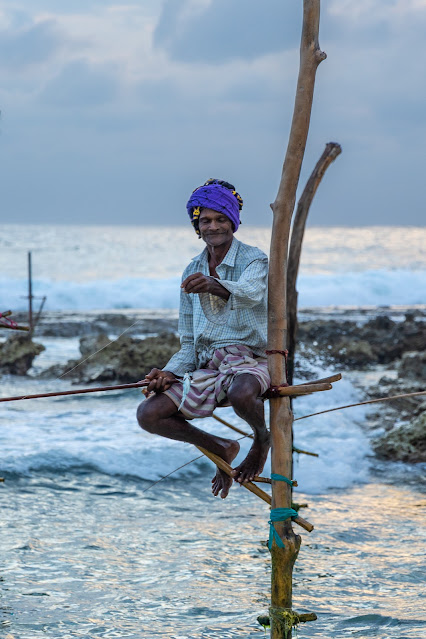











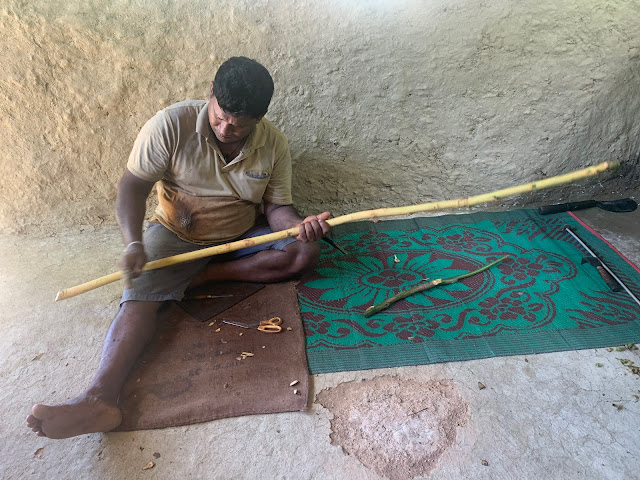


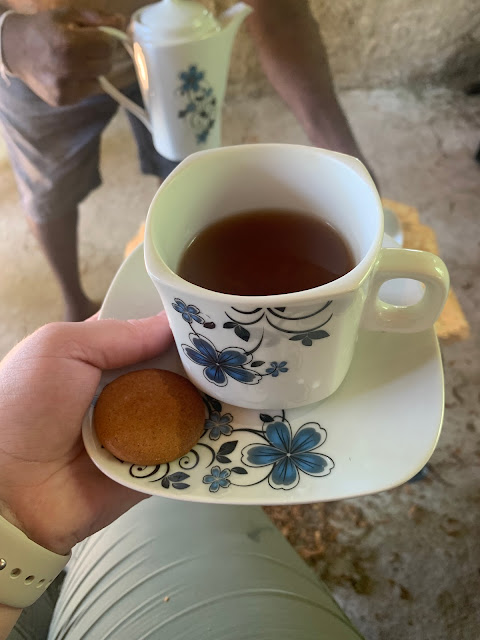









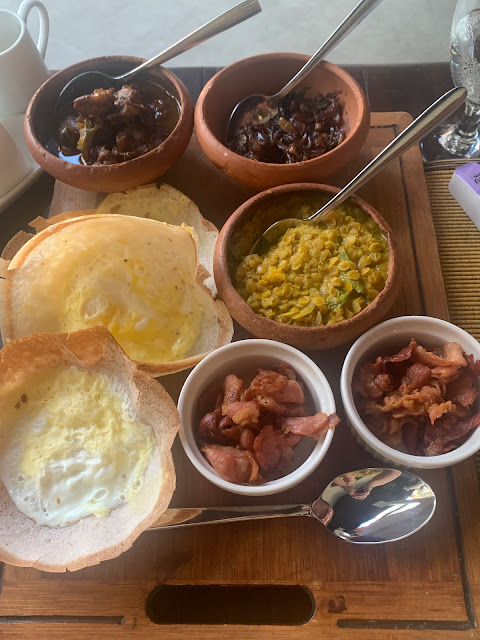























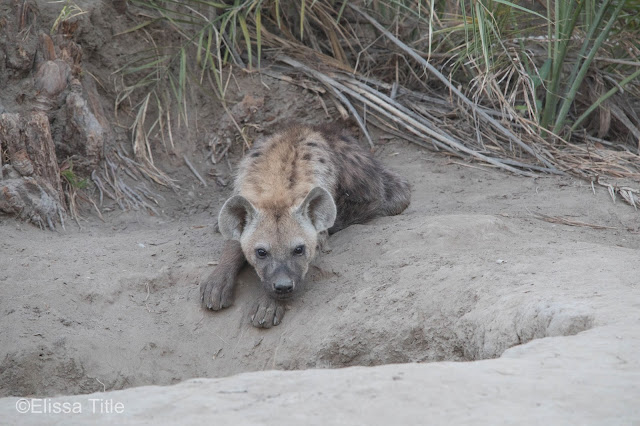




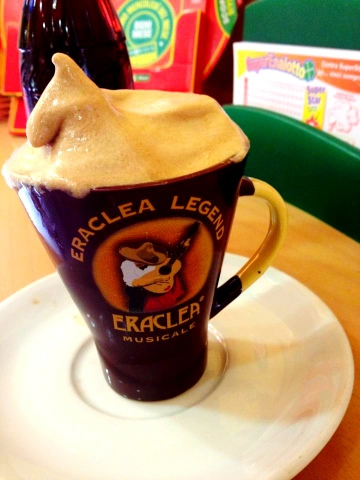

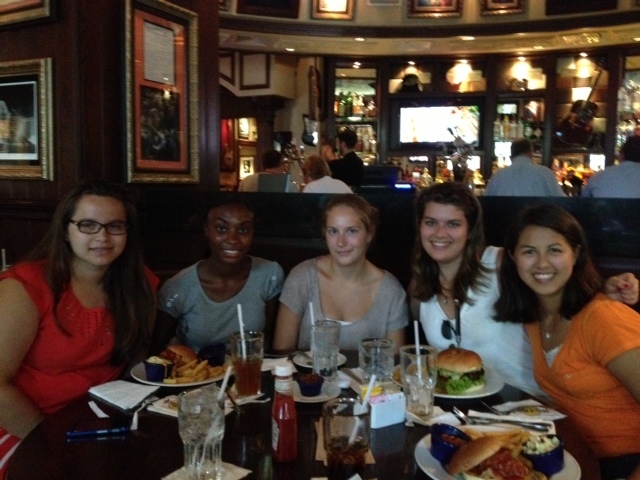

Beautiful Elissa. Thank you for the photos and understanding the life there.
ReplyDeleteJulie Payn
Hi Julie, so nice to hear from you! I'm glad you enjoyed the blog on Sri Lanka. More travels are coming soon, so stay tuned! xx
Delete